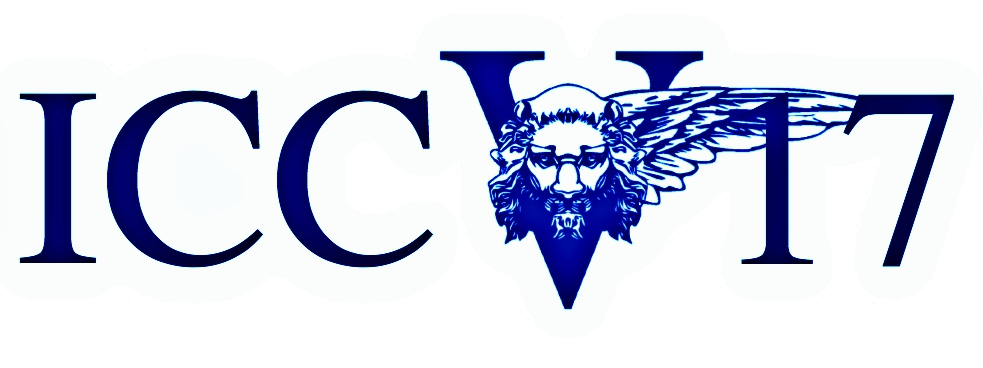-
MirrorFlow: Exploiting Symmetries in Joint Optical Flow and Occlusion Estimation
AbstractOptical flow estimation is one of the most studied problems in computer vision, yet recent benchmark datasets continue to reveal problem areas of today's approaches. Occlusions have remained one of the key challenges. In this paper, we propose a symmetric optical flow method to address the well-known chicken-and-egg relation between optical flow and occlusions. In contrast to many state-of-the-art methods that consider occlusions as outliers, possibly filtered out during post-processing, we highlight the importance of joint occlusion reasoning in the optimization and show how to utilize occlusion as an important cue for estimating optical flow. The key feature of our model is to fully exploit the symmetry properties that characterize optical flow and occlusions in the two consecutive images. Specifically through utilizing forward-backward consistency and occlusion-disocclusion symmetry in the energy, our model jointly estimates optical flow in both forward and backward direction, as well as consistent occlusion maps in both views. We demonstrate significant performance benefits on standard benchmarks, especially from the occlusion-disocclusion symmetry. On the challenging KITTI dataset we report the most accurate two-frame results to date.
Related Material
[pdf] [supp] [arXiv][bibtex]@InProceedings{Hur_2017_ICCV,
author = {Hur, Junhwa and Roth, Stefan},
title = {MirrorFlow: Exploiting Symmetries in Joint Optical Flow and Occlusion Estimation},
booktitle = {Proceedings of the IEEE International Conference on Computer Vision (ICCV)},
month = {Oct},
year = {2017}
}
These ICCV 2017 papers are the Open Access versions, provided by the Computer Vision Foundation.
Except for the watermark, they are identical to the accepted versions; the final published version of the proceedings is available on IEEE Xplore.
Except for the watermark, they are identical to the accepted versions; the final published version of the proceedings is available on IEEE Xplore.
This material is presented to ensure timely dissemination of scholarly and technical work.
Copyright and all rights therein are retained by authors or by other copyright holders.
All persons copying this information are expected to adhere to the terms and constraints invoked by each author's copyright.

